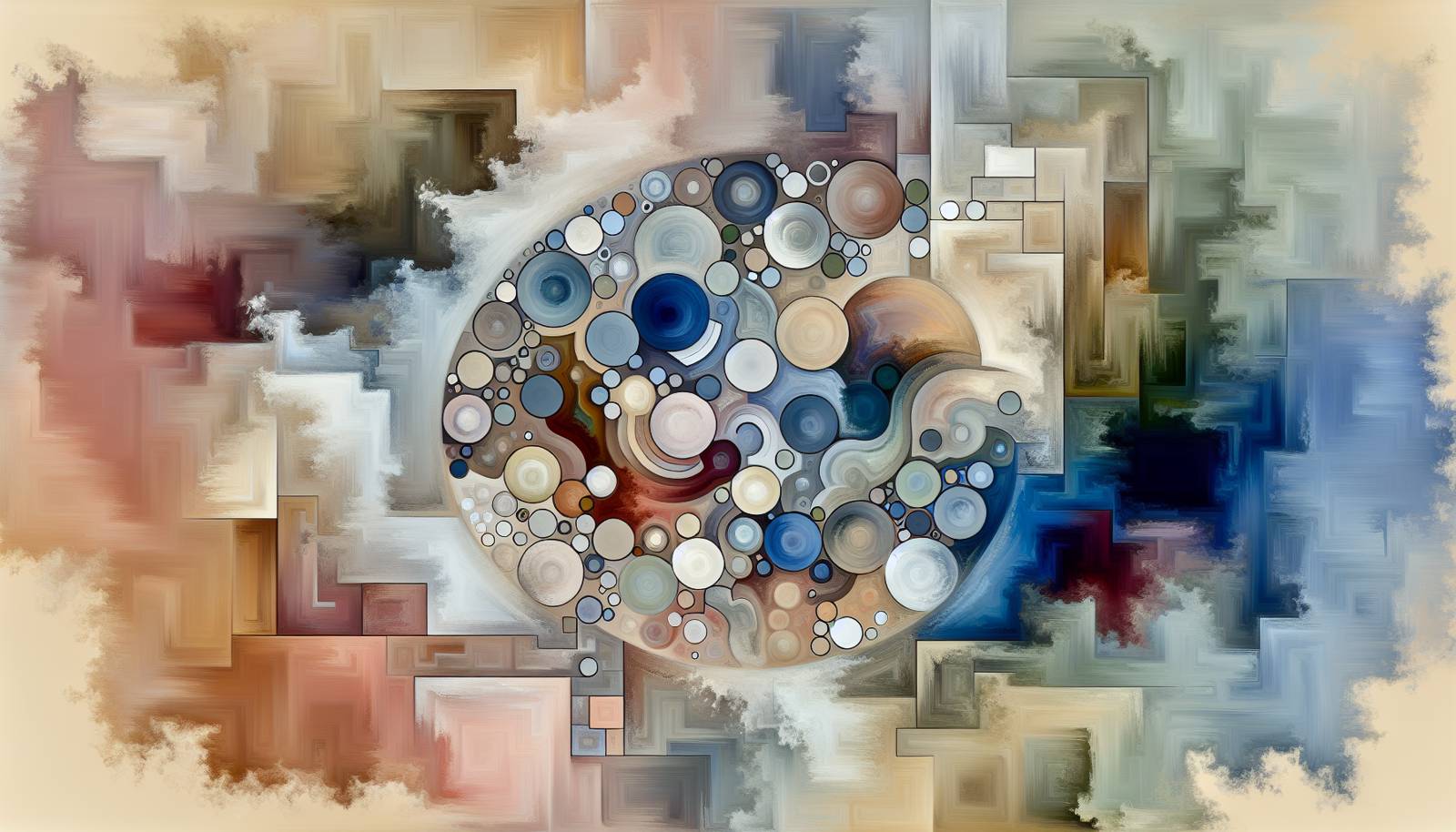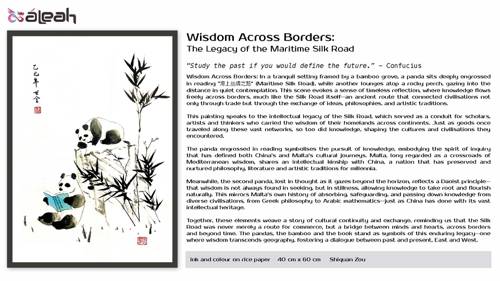
FAQ About The Role of Cultural Grafts in Artistic Innovation

What is a cultural graft in the context of art?
A cultural graft in art refers to the blending or integration of artistic elements, styles, or techniques from different cultures to create new and innovative forms of art. This concept is analogous to the horticultural practice of grafting, where parts of different plants are combined to produce a new variety. In art, this fusion can lead to the birth of unique movements, styles, or forms that transcend traditional cultural boundaries.

How do cultural grafts contribute to artistic innovation?
Cultural grafts contribute to artistic innovation by introducing artists to different perspectives, techniques, and traditions that they may not be familiar with within their own culture. By merging these diverse elements, artists can create novel artistic expressions that push the boundaries of conventional art forms. This cross-cultural exchange often leads to a new understanding and appreciation of different cultures, ultimately enriching the global art scene.

Can you provide examples of artistic movements influenced by cultural grafts?
One notable example of a cultural graft influencing an artistic movement is the impact of Japanese art on the Impressionists and Post-Impressionists, such as Claude Monet and Vincent van Gogh. The introduction of Japanese woodblock prints to Europe in the 19th century brought new perspectives and techniques that artists incorporated into their work. Another example is the influence of African art on the development of Cubism by Pablo Picasso and Georges Braque, who drew inspiration from African sculptures and masks to disrupt traditional Western perspectives on form and space.

What role did globalization play in enhancing cultural grafts in art?
Globalization has played a significant role in enhancing cultural grafts in art by facilitating the exchange of information, ideas, and cultural practices across borders. This increased connectivity allows artists to access a wide range of cultural influences, leading to a more diverse and dynamic artistic landscape. Globalization also encourages cross-cultural collaborations and artistic residencies, where artists from different parts of the world can work together and share their unique cultural heritage.

Are there any challenges associated with cultural grafts in art?
Yes, there are several challenges associated with cultural grafts in art. One major concern is cultural appropriation, where elements from a culture are used in a way that disrespects or misrepresents the original culture, often without proper credit or understanding. This can lead to the commodification of cultural symbols and practices, stripping them of their original significance. Additionally, artists may face challenges in harmoniously blending different cultural elements without losing the essence or meaning of each individual component.

How can artists respectfully incorporate cultural elements from other cultures into their work?
Artists can respectfully incorporate cultural elements from other cultures by conducting thorough research to understand the cultural significance of the elements they are using. They should aim to have meaningful collaborations with members of the source culture, which allows for dialogue and understanding. Giving proper credit and acknowledging the origins of these influences is also important. Furthermore, artists should be sensitive to the potential of cultural appropriation and strive to present these elements in a way that is respectful and honors the culture's integrity.

Can cultural grafts lead to a loss of cultural identity in art?
While cultural grafts have the potential to enrich artistic expressions, there is a concern that excessive blending may dilute distinct cultural identities. However, many artists manage to maintain cultural integrity while incorporating diverse influences by deeply understanding and respecting the cultural elements they are integrating. This careful approach can actually strengthen cultural identity by showing its adaptability and relevance in a global context, without losing its core essence.

In what ways have cultural grafts influenced contemporary art?
Cultural grafts have significantly influenced contemporary art by encouraging artists to explore hybrid identities and narratives. This blending of cultures often results in artworks that reflect the complex nature of modern society, addressing themes such as migration, globalization, and multiculturalism. The influence of cultural grafts in contemporary art can be seen in the use of diverse mediums, techniques, and themes, leading to innovative and thought-provoking creations.

What is an example of a successful cross-cultural collaboration in art?
A successful example of a cross-cultural collaboration in art is the partnership between Japanese artist Takashi Murakami and American artist Kanye West. Their collaboration brought together Murakami's vibrant, Japanese pop art-inspired style with West's dynamic and bold approach to music and visuals. This resulted in highly acclaimed cover art for West's album "Graduation," which highlighted the creative potential of cross-cultural artistic partnerships.

How does the concept of cultural grafts differ from cultural appropriation?
While cultural grafts and cultural appropriation both involve the use of cultural elements from different cultures, they differ significantly in intention and execution. Cultural grafts are based on mutual respect, understanding, and collaboration between cultures, often resulting in new, innovative art forms that honor the contributing cultures. In contrast, cultural appropriation involves taking elements from another culture without permission, understanding, or respect, often leading to misrepresentation and commodification of those cultural symbols.

What impact do cultural grafts have on traditional art forms?
Cultural grafts can have both positive and negative impacts on traditional art forms. Positively, they can revitalize traditional art by introducing new techniques, ideas, and audiences, ensuring its relevance in a contemporary context. However, there is also the risk of overshadowing traditional forms or altering them to the point where their original essence is lost. Balancing innovation with preservation is key to ensuring that traditional art forms benefit from cultural grafts without losing their cultural identity.

Why is it important to study cultural grafts in art history?
Studying cultural grafts in art history is important because it sheds light on how cultural interactions have historically shaped and continue to influence artistic innovation. It helps us understand the processes of cultural exchange and the resulting fusion of ideas, styles, and practices. This knowledge allows for a deeper appreciation of the richness and diversity of art across different cultures, fostering mutual respect and understanding. Furthermore, it can inform contemporary practices and inspire new creative collaborations.

What role do institutions and galleries play in promoting cultural grafts in art?
Institutions and galleries play a crucial role in promoting cultural grafts in art by providing platforms for exhibitions, residencies, and collaborative projects that highlight cross-cultural innovation. They can host events and discussions that foster dialogue between artists from different cultural backgrounds, encouraging the exchange of ideas and practices. Additionally, these institutions can help curators and the public understand the cultural significance behind grafted artworks, ensuring they are presented respectfully and thoughtfully.

How have advancements in technology affected cultural grafts in art?
Advancements in technology have greatly affected cultural grafts in art by making it easier for artists to access and share cultural materials from around the world. Digital technology allows artists to collaborate across great distances and explore diverse cultural influences through online platforms. Virtual reality, video art, and digital installations enable the creation of immersive experiences that blend multiple cultural elements, further expanding the possibilities for cultural grafts in modern art.

Have any cultural grafts been controversial in the art world?
Yes, there have been cultural grafts that sparked controversy, particularly when the blending of cultural elements was perceived as disrespectful or inauthentic. An example is the use of Native American motifs in fashion and art, which often faces backlash when designers and artists adopt them without permission or proper context. Such controversies typically arise from misunderstandings or the failure to acknowledge the cultural significance of the symbols and their historical context, leading to debates about cultural appropriation and respect.

What are some common misconceptions about cultural grafts in art?
A common misconception about cultural grafts in art is that they always lead to a loss of authentic cultural identity. However, when done respectfully, grafts can actually highlight the strength and adaptability of cultural traditions. Another misconception is that cultural grafts are merely superficial blends of styles. In reality, effective cultural grafts delve deeper, reflecting a profound understanding and appreciation of the integrated cultures. These misconceptions can be addressed through education and open dialogue about cultural sensitivity and artistic intentions.

How do cultural grafts influence global art markets?
Cultural grafts influence global art markets by increasing the demand for artworks that reflect diverse cultural narratives and innovative styles. As collectors and art enthusiasts become more interested in works that present unique combinations of cultural influences, artists who engage in cultural grafts may find greater opportunities in international markets. This trend encourages more cross-cultural collaborations and exhibitions, promoting a richer, more dynamic exchange of cultural and artistic ideas worldwide.

What ethical considerations need to be taken into account with cultural grafts?
Artists engaging in cultural grafts need to consider the ethical implications of their work by ensuring respect and sensitivity towards the source cultures. This involves understanding and accurately representing the cultural elements they incorporate, avoiding stereotypes and misrepresentations. Artists should aim to give credit where due, involving members of the source culture where possible, and being transparent about their influences. Ethical cultural grafts strive to add value without exploiting or diminishing the cultural heritage of others.

How do artists determine which cultural elements to graft into their work?
Artists often determine which cultural elements to graft into their work based on personal experiences, interests, or the desire to convey specific messages. They may be inspired by encounters with different cultures through travel, study, or collaborations. Artists typically choose elements that resonate with their artistic vision or that can enhance the narrative or aesthetic of their work. This decision-making process involves research, reflection, and often consultation with individuals from the culture being represented to ensure authenticity and respect.

What future developments can we expect in the field of cultural grafts in art?
The future of cultural grafts in art is likely to be shaped by continued globalization and technological advancements, leading to even more interconnected artistic practices. Emerging technologies such as virtual reality and artificial intelligence may further transform how cultural elements are integrated, allowing for more immersive and interactive experiences. As artists increasingly engage in global dialogues, we can expect the development of new hybrid art forms that reflect the complexity and fluidity of modern cultural identities.
